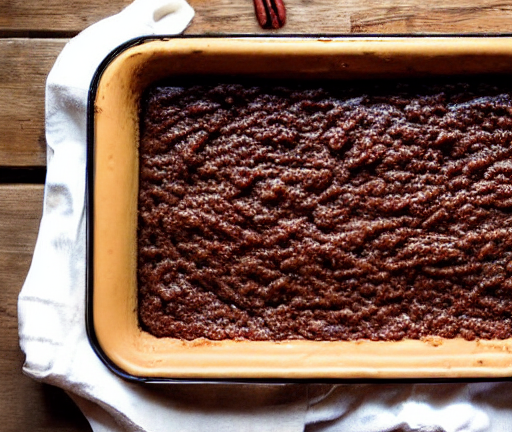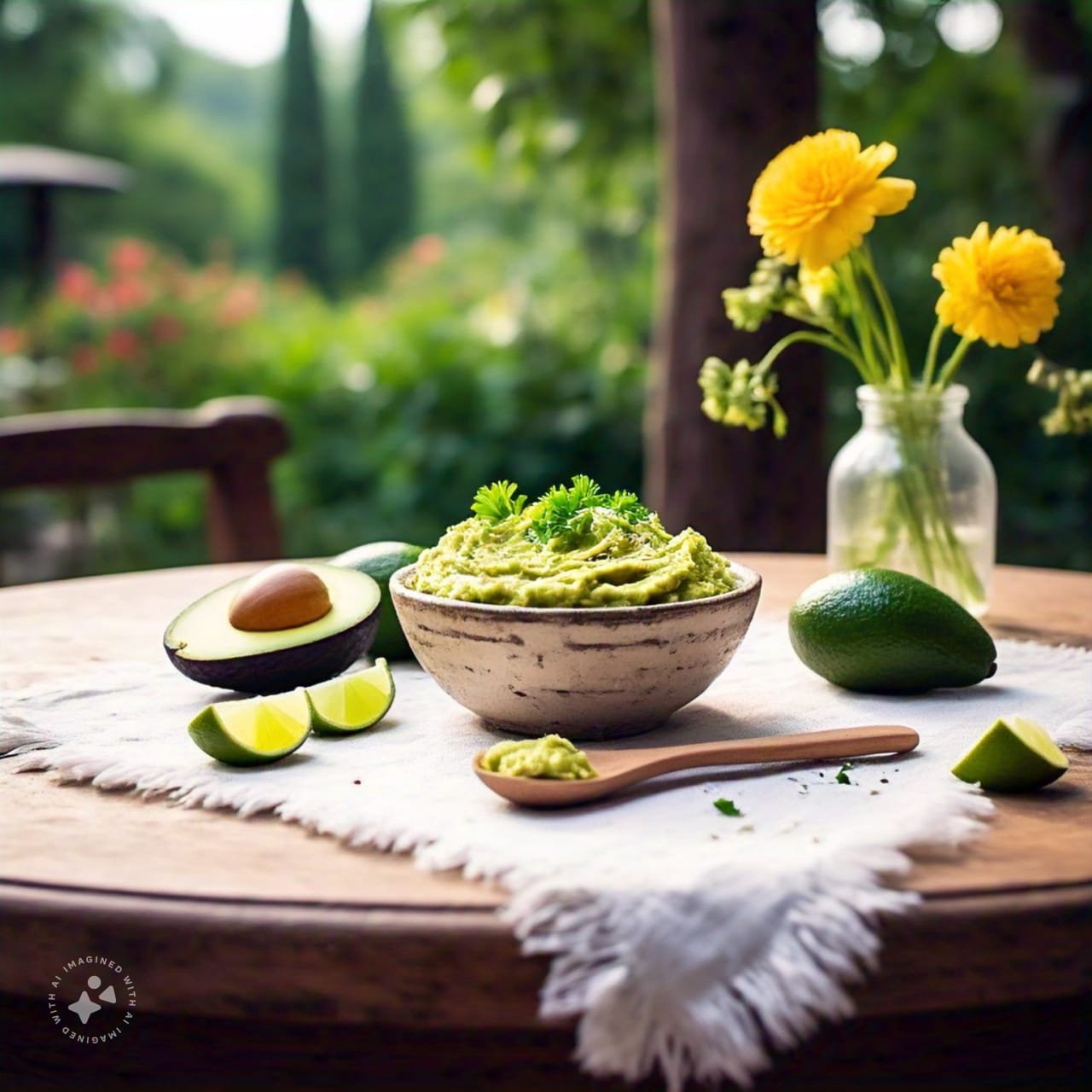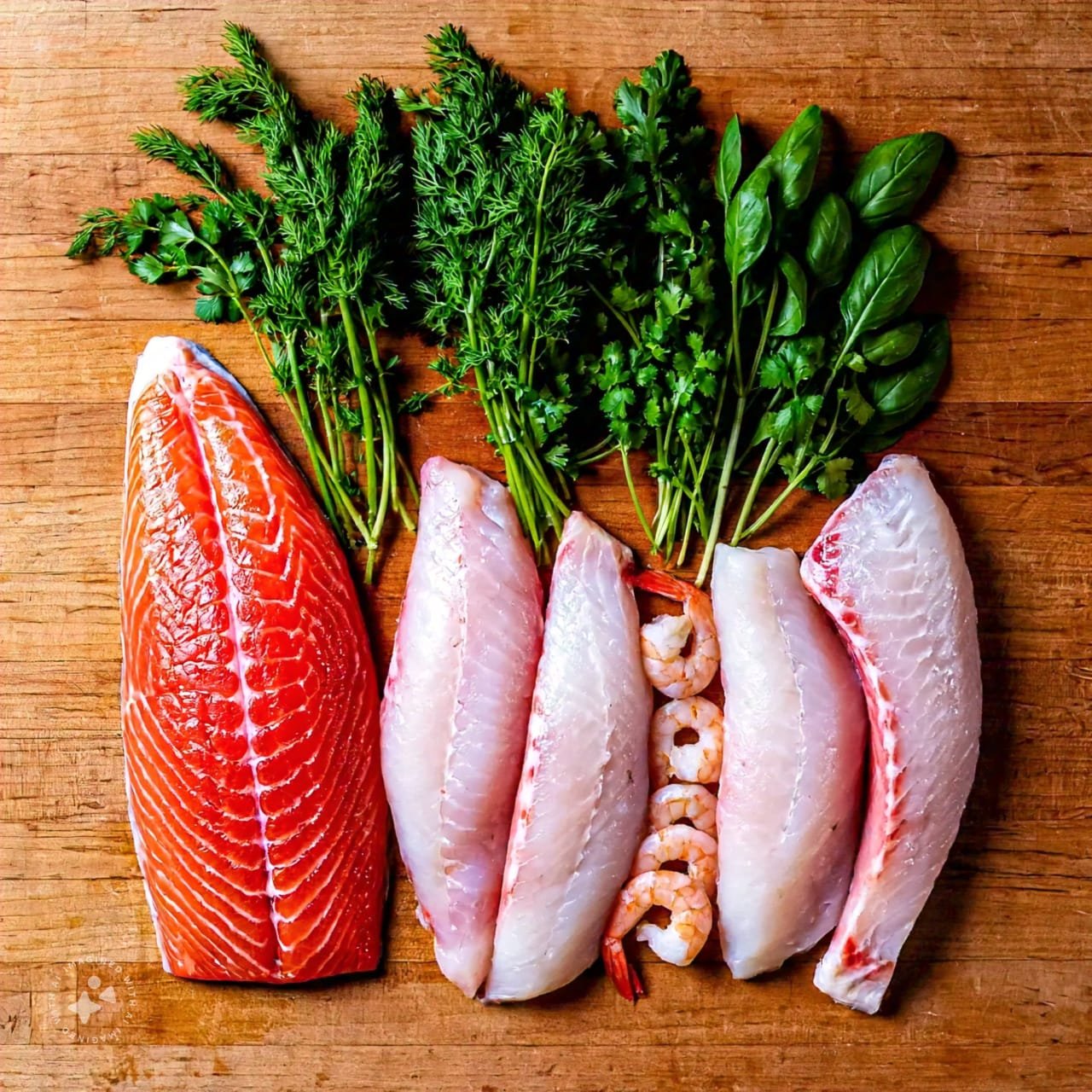When winter mornings roll around, I can’t help but think of my grandmother’s kitchen, filled with the aroma of buttery batter rising in the oven. Her German pancake recipe—light, airy, and just slightly crisp at the edges—was our family’s favorite Sunday treat. Also known as a Dutch baby (though its roots are German), this simple oven-baked pancake puffs up dramatically, making it as fun to watch as it is to eat.
Whether you’re cooking for your family, hosting a brunch, or just treating yourself to something comforting, this German pancake is a showstopper that requires minimal effort.
Table of Contents
What Is a German Pancake?
A German pancake is a baked pancake made from eggs, flour, and milk. Unlike traditional stovetop pancakes, this version is cooked in a hot oven-safe skillet, which gives it dramatic lift and crispy, curled edges. The interior stays soft and custard-like, while the outer rim browns beautifully.
It’s perfect for serving at brunch, during the holidays, or anytime you want something comforting but fuss-free.
The Origins of the German Pancake
Though Americans often refer to it as a “Dutch baby,” the dish actually has German roots. It’s inspired by the traditional German Pfannkuchen, but its oven-baked twist became popular in the United States thanks to German immigrants and Seattle’s Manca’s Café, which first served the “Dutch baby” in the early 1900s.
The name “Dutch” is thought to be a misinterpretation of “Deutsch,” the German word for—well—German
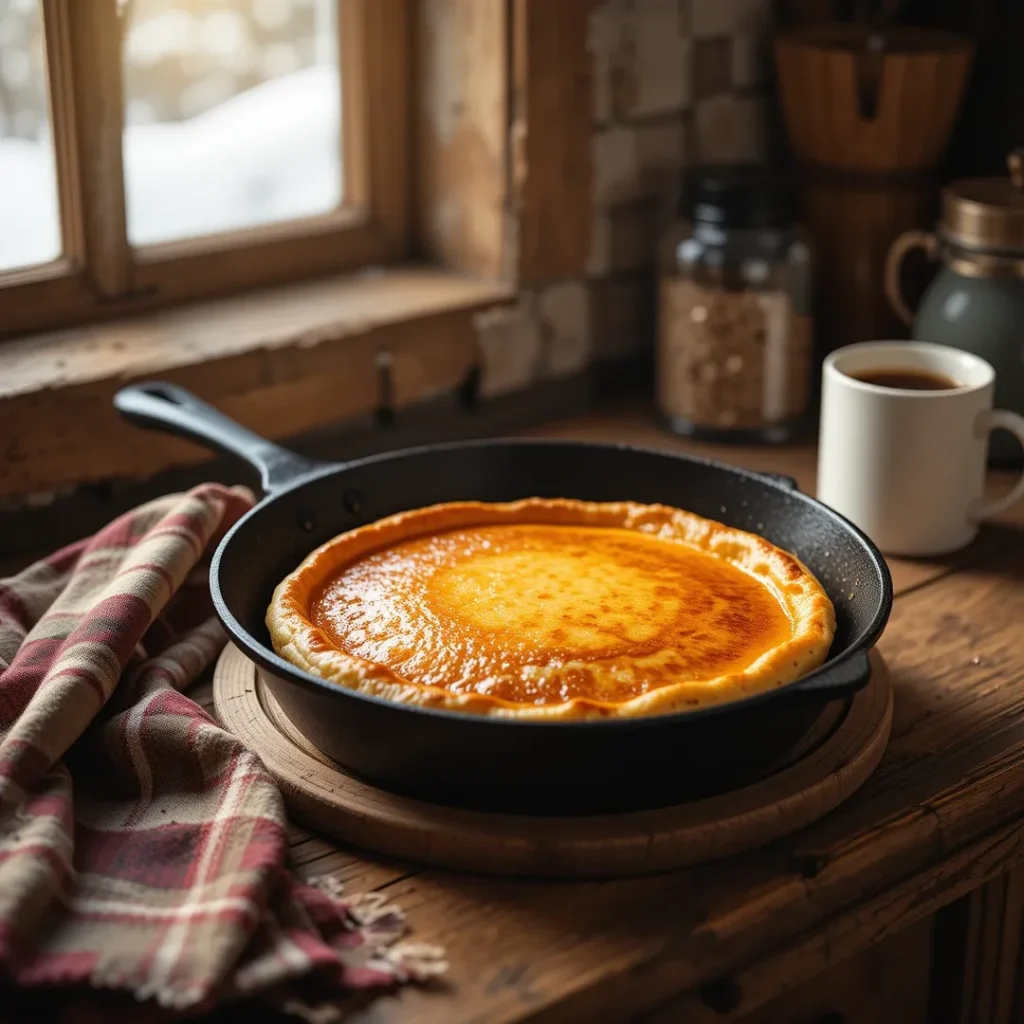
Why You’ll Love This German Pancake Recipe
- Quick & Easy: Only 5 minutes of prep!
- Pantry-Friendly: Uses simple ingredients.
- Show-Stopping Presentation: It puffs up beautifully in the oven.
- Customizable: Top it sweet or savory—your choice!
Ingredients
- Eggs
- All-purpose flour
- Whole milk (room temperature)
- Granulated sugar
- Salt
- Vanilla extract
- Unsalted butter (for the skillet)
- Optional toppings: powdered sugar, lemon juice, berries, maple syrup
Step-by-Step Instructions
1. Preheat Your Oven and Pan
Start by placing a 10-inch cast-iron skillet (or any oven-safe pan) into your oven and preheat it to 425°F (220°C). The hot pan is crucial—it gives the batter that instant lift once it hits the heat.
2. Blend the Batter
While the oven heats, prepare your batter. You can whisk the ingredients in a bowl, but I recommend using a blender to achieve a silky, lump-free texture. Add the eggs, milk, flour, sugar, salt, and vanilla. Blend until smooth and bubbly, then let the batter rest for 5–10 minutes.
3. Melt the Butter
Carefully remove your hot skillet from the oven and drop in the butter. Swirl it around until the entire surface is coated. It should sizzle—this tells you the pan is ready.
4. Pour and Bake
Immediately pour the batter into the buttery skillet and return it to the oven. Bake for 18–20 minutes without opening the door. The pancake will puff dramatically and turn golden brown around the edges.
5. Serve and Enjoy
Take your pancake out of the oven—it will begin to deflate slightly, but that’s part of its charm. Slice it into wedges and serve right away with your choice of toppings.
Topping Inspiration
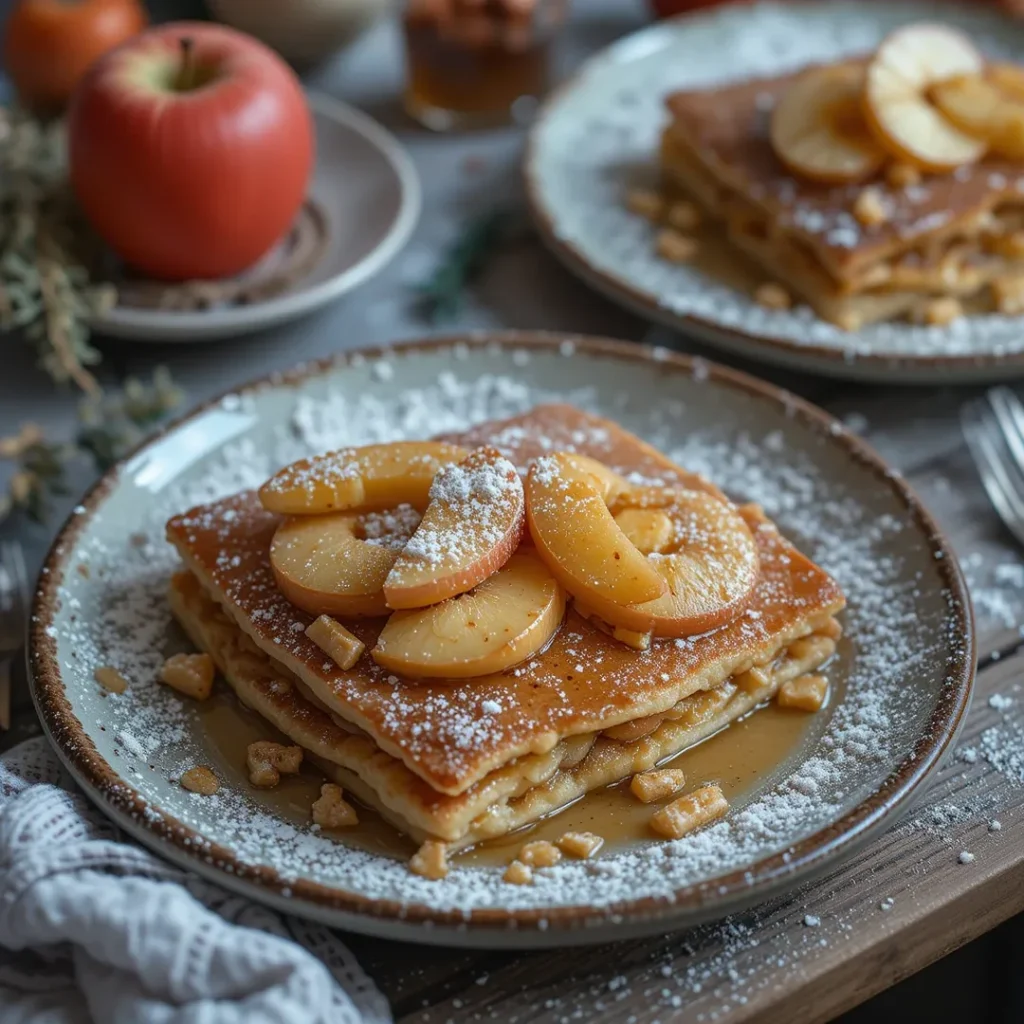
The beauty of this dish is its versatility. Here are some cozy topping ideas to match the season:
- Classic: A dusting of powdered sugar with a squeeze of lemon
- Winter Fruit: Warm cinnamon-spiced apple slices and a dollop of whipped cream
- Indulgent: Maple syrup with toasted pecans
- Savory Option: Skip the sugar and vanilla in the batter, then top with herbed cream cheese, smoked salmon, or a fried egg
Why You’ll Fall in Love with This Recipe
This German pancake recipe is the perfect balance of simple and stunning. It’s easy enough to make before coffee, but it feels like something from a charming European café. The textures are delightful—crispy, tender, and custardy—and the flavors are warm and welcoming.
It’s also incredibly satisfying to watch it puff up in the oven. For kids, it’s almost magical; for adults, it’s a reminder of how delightful real food can be.
Make It a Full Winter Brunch
If you’re entertaining or just making Sunday morning extra special, pair this pancake with:
- Freshly brewed coffee or a frothy latte
- A bowl of seasonal fruit (think pears, oranges, or pomegranate seeds)
- A side of crispy bacon or sausage
- Spiced apple cider or hot chocolate
Add a wooly blanket and some twinkling lights, and you’ve got the coziest morning imaginable.
A Few Tips for Success
- Room temperature ingredients help the batter puff more dramatically.
- Don’t skip preheating the pan—it’s key to getting those signature edges.
- Resist the urge to open the oven door while baking! The steam is what helps it rise.
- Serve immediately for best texture and presentation
Frequently Asked Questions
Can I Make German Pancakes in Advance?
Technically, yes, but they’re best fresh. The magic of a German pancake is in its dramatic puff, which starts to deflate as it cools. However, if you want to make them ahead:
Store in an airtight container in the fridge for up to 2 days.
Reheat in the oven at 350°F (175°C) for 5-7 minutes to crisp them up again.
How can I Store and Reheat German Pancakes?
If you have leftovers (rare, because they’re so good! ), here’s how to store them:
Fridge: Keep in an airtight container for up to 2 days.
Freezer: Wrap in plastic wrap and freeze for up to a month.
Best Way to Reheat:
Oven: Bake at 350°F (175°C) for 5-7 minutes.
Air Fryer: Heat at 350°F (175°C) for 3-4 minutes.
Microwave: Heat in 30-second intervals, but this may make it softer.
What’s the Best Pan for Making German Pancakes?
A cast-iron skillet is the best choice because it retains heat well, helping the pancake puff up beautifully. However, you can also use:
A ceramic or glass baking dish
A metal cake pan
Just make sure it’s oven-safe and can withstand high heat!
Why Didn’t My Pancake Rise?
Nothing worse than expecting a fluffy pancake and getting a flat one! Here are the possible reasons:
The oven or pan wasn’t hot enough – preheating is key!
You overmixed the batter – mix just until smooth.
The eggs weren’t fresh – fresh eggs = better rise.
The pan wasn’t properly buttered, causing sticking.
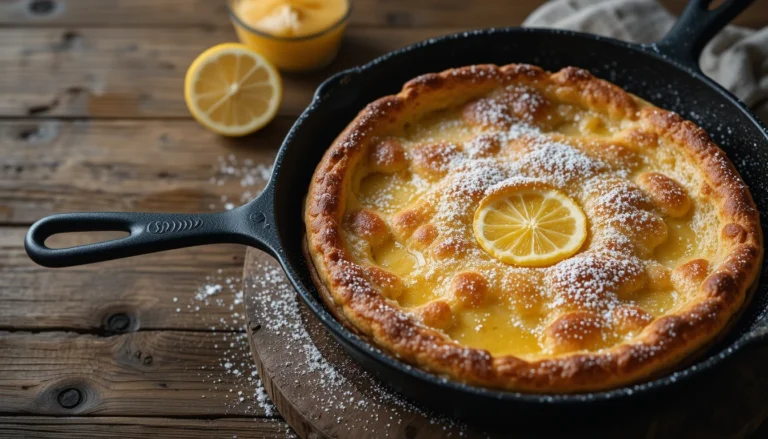
German Pancake
- Total Time: 20-25 min
- Yield: 2-4 1x
Ingredients
- 3 large eggs
- 1/2 cup milk (whole or 2%)
- 1/2 cup all-purpose flour
- 2 tbsp butter
- 1/4 tsp salt
- 1 tsp vanilla extract (optional)
- 1 tbsp sugar (optional, for a slightly sweet version)
Instructions
- Preheat your oven to 425°F (220°C). Place a cast-iron skillet (or oven-safe pan) inside to heat up.
- In a blender, mix eggs, milk, flour, salt, vanilla, and sugar until smooth. If using a whisk, make sure there are no lumps.
- Carefully remove the hot skillet from the oven and add butter. Swirl it around until melted.
- Pour the batter into the skillet and quickly return it to the oven.
- Bake for 15-20 minutes until the pancake puffs up and turns golden brown.
- Remove from the oven, let it slightly deflate, and top with powdered sugar, lemon juice, or your favorite toppings. Enjoy
- Prep Time: 5 min
- Cook Time: 15-20 min
Final Thoughts
Whether you’re new to baking or an old pro, this German pancake recipe is one of those rare gems that delivers wow-factor with almost no stress. It’s a dish that brings people together around the table, especially when the weather outside calls for something warm and homemade.
So give it a try this weekend—and let me know how you top yours!
You might also like Cottage Cheese Ice Cream


